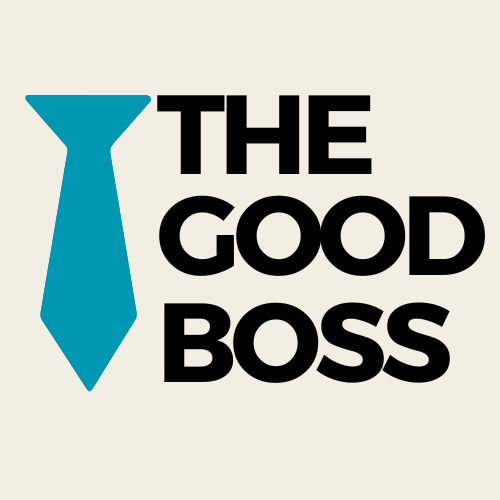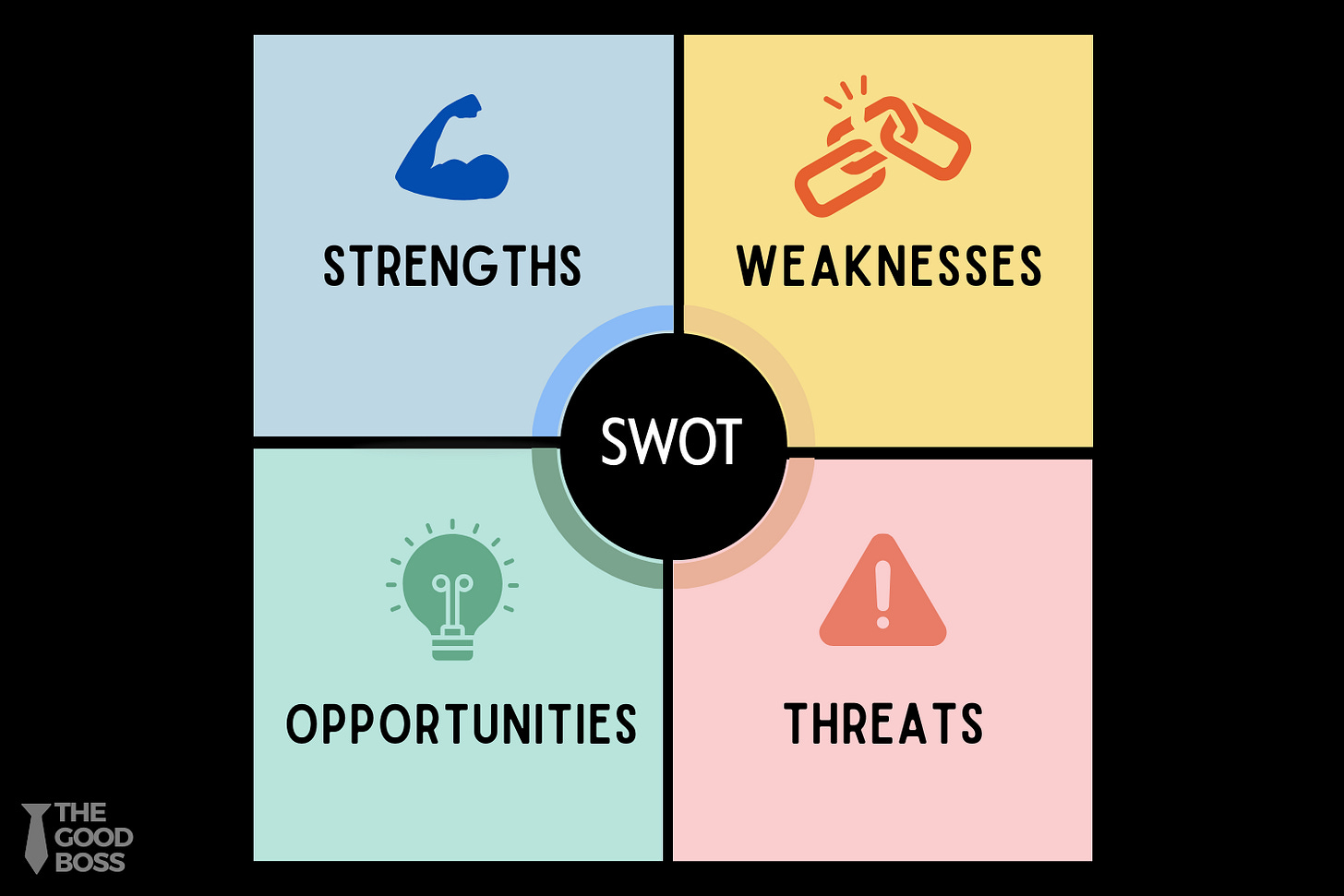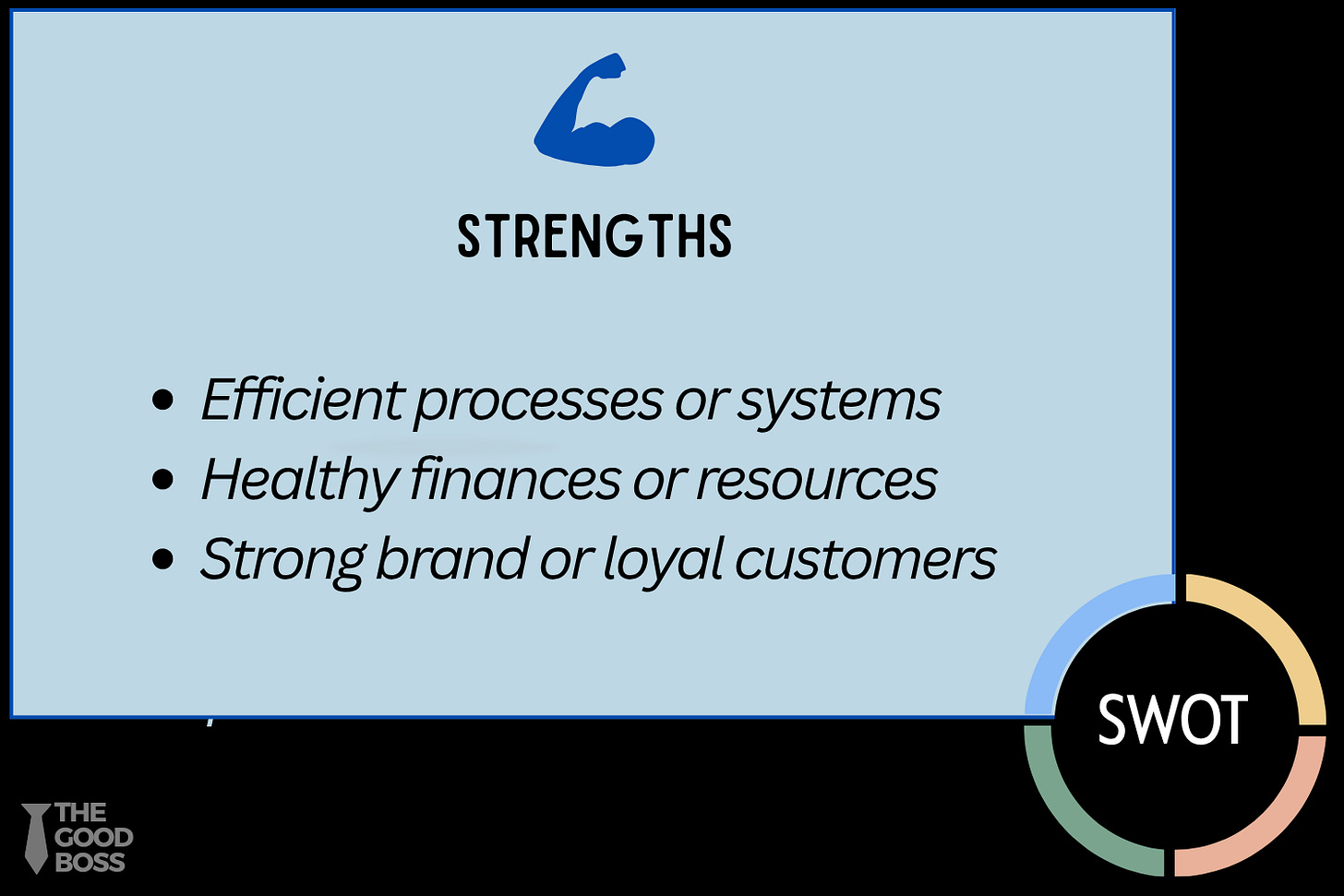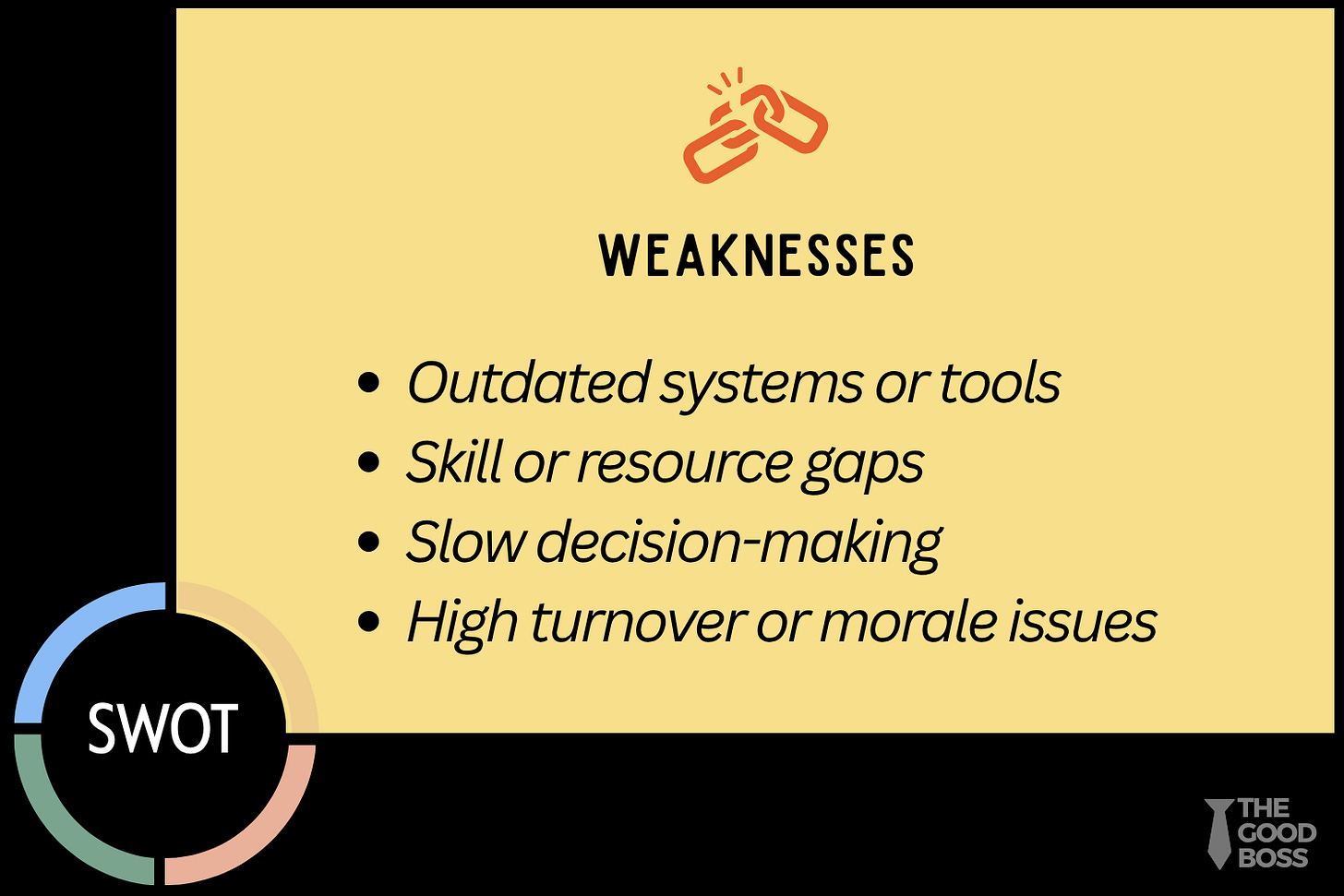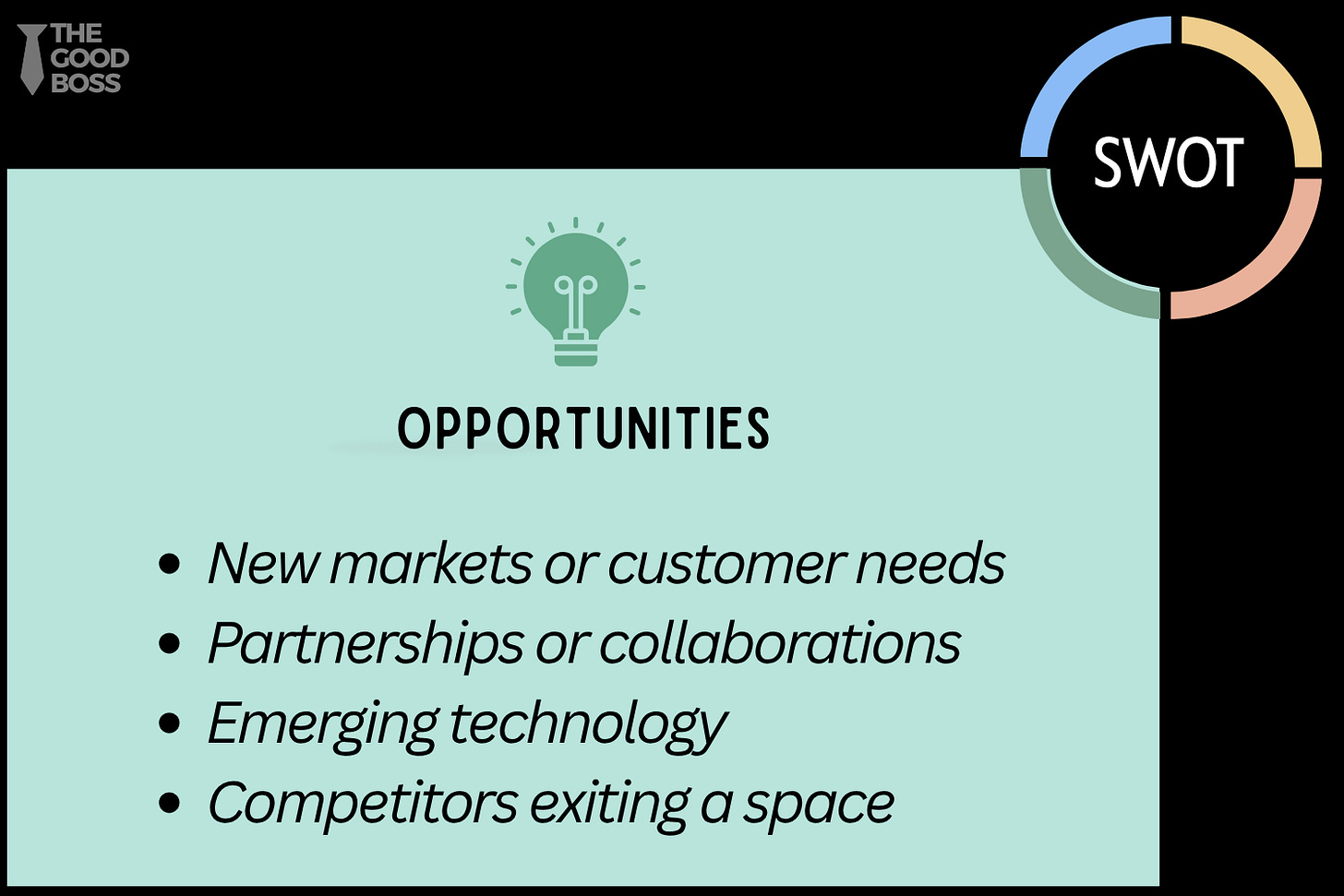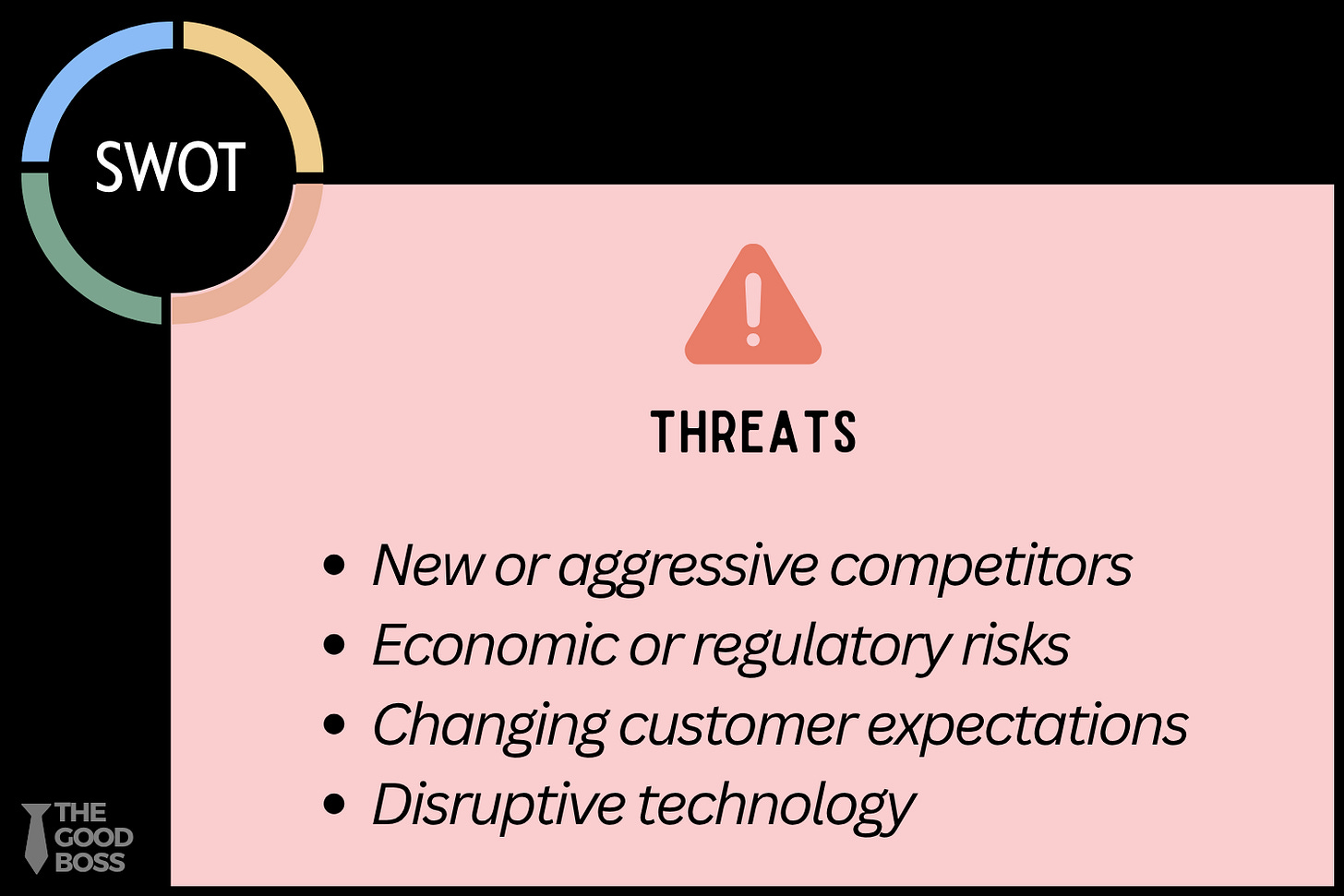SWOT Analysis: How Smart Leaders Go Faster by Taking a Pause
A clear, structured way to think before you act
In this issue:
Part 1: Understanding SWOT Analysis
What is SWOT Analysis?
The Four Boxes
Part 2: Applying SWOT Analysis
The Strategic Layer Cake of SWOT
Real-Life Leadership Scenarios
The SWOT Analysis Worksheet
Part 3: Going from Here
Common Pitfalls and How to Avoid Them
Recommended Resources
Final Thoughts
✨
A few years ago, I was in the middle of a high-visibility project that felt like it was slipping away. The deadlines were tight, and my team was stressed. Things seemed out of control - fix one issue, and two new ones would pop up.
Yeah, it wasn’t pretty.
I remember walking into a late-evening review meeting with my team feeling exhausted (I’m a morning person, if I may add). Everyone had opinions on how to move forward, or the right ‘fix’.
Some said we needed more resources.
Others said the market had shifted, and we need to rethink our strategy.
A few thought the problem was our internal processes.
That night, instead of debating for another two hours, I grabbed a whiteboard and drew a simple 2x2 grid.
Across the top, I wrote “Opportunities” and “Threats.”
Down the side, I wrote “Strengths” and “Weaknesses.”
We spent the next 30 minutes filling those boxes together.
What surprised me was how quickly the noise turned into clarity. Once the issues were laid out in front of us, it became obvious where we were stuck and what we needed to do.
That was a turning point for me. I realized that leaders often don’t fail because they lack effort. We fail because we don’t stop to reflect.
In this article, we will discuss a classic framework called SWOT Analysis, which helps you to take that much-needed pause. You will learn how to use this powerful framework to reflect on your team’s strengths, weaknesses, and to prepare yourself for the opportunities and threats ahead.
Ready to dive in? Let’s go!
Part 1: Understanding SWOT Analysis
In this section, let’s take a closer look at SWOT, where it came from, how it works, and why it remains such a powerful tool.
What is SWOT Analysis?
SWOT is one of the simplest and most widely used frameworks in strategy. It was first developed in the 1960s at the Stanford Research Institute as a way for businesses to reflect on their plans.
The acronym stands for:
Strengths – What you do well. The resources, skills, or advantages that give you an edge.
Weaknesses – Where you struggle. Gaps in capability, process, or mindset.
Opportunities – External trends or openings you can take advantage of.
Threats – External risks that can derail your progress.
The real magic of SWOT lies in its simplicity. It separates what’s internal (strengths and weaknesses, things you control) from what’s external (opportunities and threats, things outside your control). That distinction matters because too often leaders confuse the two. We waste time trying to “fix” things that are beyond our control instead of doubling down on our strengths.
Enjoying the read? I’ll appreciate it if you would take 2 seconds and hit the ❤️ button and share/restack 🔁 it with others who might find it helpful. You can also subscribe to The Good Boss for more posts like this every week. Thank you! 🙏
The Four Boxes
When you sit down to run a SWOT Analysis, the quality of your insights depends on how you fill each box. Let’s go deeper into what belongs in each one.
Box #1: Strengths – What gives you an edge
Think of these as your unique advantages, the things you do better than others. They can be tangible or intangible.
Examples include:
Skills your team has that are hard to find elsewhere
Loyal customers or strong brand reputation
Patents, technology, or unique data
Strong cash position or profitable business units
Deep relationships with partners or suppliers
A culture of innovation or collaboration
👉🏼 Be specific. “We have great people” is too vague. Instead: “Our customer success team has a 90% satisfaction score.”
Box #2: Weaknesses – Where you are at risk internally
These are the internal factors holding you back. Most leaders hesitate to admit weaknesses, but a good SWOT analysis is brutally honest.
Examples include:
Skills gaps on the team
Outdated systems or processes
High employee turnover or morale issues
A narrow product portfolio
Slow decision-making or bureaucracy
Limited budget or resources compared to competitors
👉🏼 Weaknesses are not about beating yourself up. They’re about identifying areas you can improve or compensate for.
Box #3: Opportunities – External trends you can ride
These are openings in the external environment that you can take advantage of. They’re not under your control, but you can position yourself to benefit from them.
Examples include:
New markets opening up
Emerging customer needs
Competitors exiting a space
Technological advances that reduce costs
Regulatory changes that favor your business
Partnerships or acquisitions that could accelerate growth
👉🏼 Opportunities don’t last forever. Spotting them early is half the battle.
Box #4: Threats – External risks that could derail you
These are forces outside your control that could harm your progress if left unchecked.
Examples include:
New competitors entering the market
Changing customer expectations
Disruptive technology that makes your product obsolete
Supply chain disruptions
Economic downturns or rising costs
Regulatory pressures or compliance risks
👉🏼 The goal isn’t to avoid threats as they’re often unavoidable. It’s to prepare and build resilience against them.
Feedback is a gift! 💬 If you’re finding this post helpful, would you do me a favor and leave a quick testimonial here, and as a thank-you, I’ll send you a free copy of my book! It only takes a couple of minutes - thank you! 🙏
Part 2: Applying SWOT Analysis
In this section, you’ll learn how to apply SWOT Analysis as a leader.
We will start by reviewing the Strategic Layer Cake, a smart way to do the SWOT analysis by going deeper than surface-level inputs, so you can derive meaningful actions out of it.
We will then look at some common real-life leadership scenarios where SWOT is especially useful.
Finally, we will make it real with the SWOT Analysis Worksheet, which will help you build your muscle in applying and using this framework in your own leadership practice.
The Strategic Layer Cake of SWOT
One of the common mistakes leaders make is treating SWOT like a brainstorming checklist. People throw ideas into each box without digging deeper. The result is a shallow matrix that doesn’t change anything.
Your goal with SWOT, and for that matter with any framework, should be to make it work for you on the ground. Otherwise, what’s the point?
Here is how you can make SWOT useful for you by thinking of it as a layered process that I like to call the Strategic Layer Cake of SWOT:


